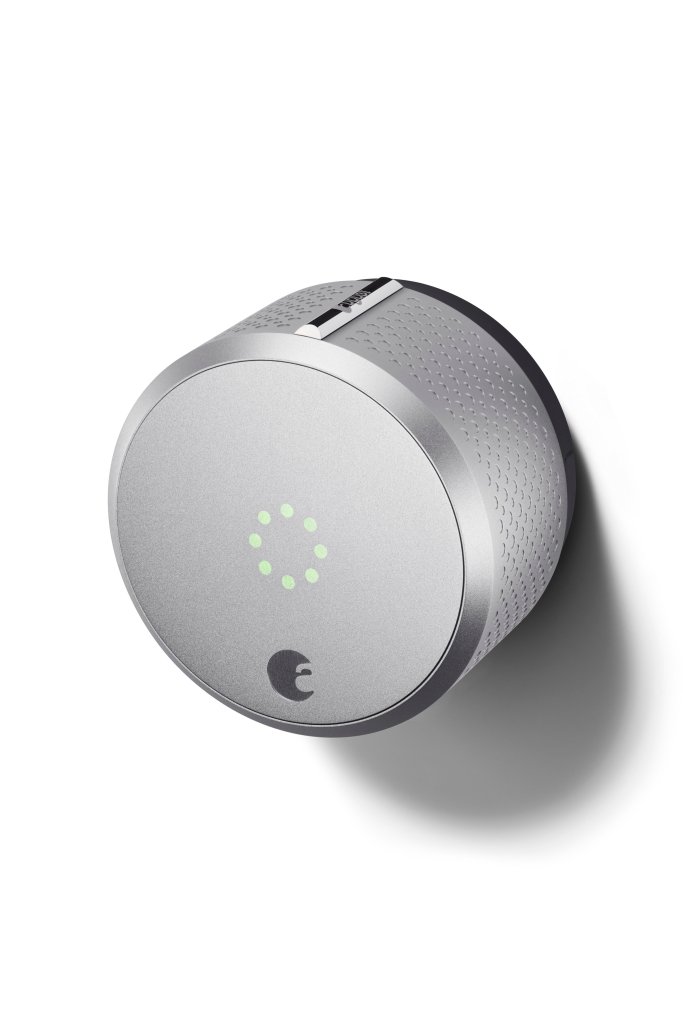Technology is hard to embrace. It can move so fast that it can become obsolete before many developments open their doors.
Just think, product selection could happen in 2015 and the doors to the project don’t open until 2017. That two-year span could see two versions of an iPhone. Erik Earnshaw, partner at BGO Architects, is seeing the consequences that this is having on specifying products for multifamily developments and getting the developers to “buy in.”
“You need to remember that we’re always two years behind,” Earnshaw says. “You also have to anticipate where it will be in two years. In one project we did, we thought iPod docking stations would be great to add to every unit. We installed the first ones in the amenity space of a property, and by the time the property opened they were obsolete because the charging device had changed.”
Many renters have an expectation of connectivity and will demand technology solutions to be part of every aspect of their housing, and they certainly don’t want outdated solutions. So, how do architects anticipate the future and sell solutions to developers with the end goal in mind—to make money?
A decent return must be made on any technology that goes into thousands, hundreds, or even just dozens of units at a property. Depending on the market where the project is being developed and the demographics that are being targeted, there could be different expectations on the technology as well. Earnshaw says he believes the younger demographic is sometimes coming from home or from a student living environment and doesn’t necessarily expect to have the most cutting-edge technology, but they want it and are willing to pay for it.
On the other hand, the older demographic has a higher expectation for it just being there and being ready to use, making them more comfortable and making everything more convenient because they are coming out of the work world and have been using it on a day-to-day basis.
With all these complications, Earnshaw and his team at BGO Architects are considering what they are going to incorporate as the architect partner in the Next Generation Development. They also recommend these top five technologies to any developer starting a project now.
1. Smart entry systems. Keyless unit entry doors and all-access doors on-site allow residents access to the different amenity areas, while also allowing the management company to know who accessed what and when and for how long. Plus, they can provide entry codes to guests or anyone else visiting.
Smart locks also offer that critical element of payback. According to a survey conducted by lock manufacturer Schlage and Wakefield Research of 1,000 U.S. multifamily renters, millennials, especially, are interested in home technology and are willing to pay more for smart upgrades. Specifically, the survey team found that 86% of millennials are willing to pay about one-fifth more for a smart apartment, defined as including automated or remotely controlled devices, such as a smart lock, an automated thermostat, or lighting controls.
The payback suggests an opportunity as does the recent survey by our data partner on the 2017 MFE Concept Community, The Farnsworth Group, that examined usage and perceptions regarding next-generation building performance. This year’s survey, which received responses from 159 multifamily builders, developers, and architects, found that door locks were rated as one of the top three most important things in the resident experience by more than 63%. Yet, no more than 3% were installing smart locks.
2. Sound systems. BGO Architects recommends a Bluetooth speaker system in the living area and in the bedrooms so residents can connect their Bluetooth-enabled devices to listen to the music of their choice.
“Wiring for speakers in the unit is definitely overlooked,” says Dave Pedigo, vice president, emerging technologies at CEDIA. “Residents want to conveniently listen to music in the background without overpowering neighbors.”
3. Smart home management systems. So many smart home products are on the market today. They offer a whole host of benefits to residents, and property managers can also see the usefulness of this system. The resident can use it to dim the lights, play music, turn up the heat, lock the doors, and arm the security system with one touch as well as check on the apartment from a smart device at any time, no matter where they are. Other automated settings can capture a mood like “nighttime” that will put the unit to sleep, turning off all the lights, locking the doors, and adjusting the temperature.
A smart home management system is a great way for residents and the management company to lower utility expenses because it helps control the spend with automated settings. It could be offered as an option for residents, which would allow owners to recoup some of the expenses.
Many systems exist today and are being upgraded on a fast track. It would be best to specify a brand that could offer the latest product version in the installation process and one that also would send wireless updates so residents always had the best version.
4. Smart appliances. Whirlpool recently launched smart appliances that can be controlled by a smart device. Earnshaw imagines residents sitting by the pool while cooking a roast in their oven for a dinner party. The residents will be notified via a phone alert when the roast reaches temperature. They can decide to adjust the oven temperature or turn it off and remain at the pool for another 20 minutes.
Plus, the smart appliances will be able to learn new users. For instance, smart appliances have voice control through Amazon Alexa for the first time, which enables the user to ask for recipes. Plus, these technologies are advancing in new ways, becoming intuitive to the home buyer’s use. So these appliances actually learn and change as they improve their “knowledge” of the user.
This also is a low-risk investment for properties because appliances have a much longer life span. According to The Farnsworth Group survey, respondents listed appliances as the most popular next-generation product already being installed in multifamily, at 63%.
5. Fitness technology. The amenities and the common spaces of a development can create a big impression on residents. The fitness center is one of the centerpieces of that experience. And technology is now allowing for self-guided tours of fitness equipment, along with every type of class from spin to yoga taught by virtual instructors.

All of these technology enhancements are great, especially if owners can see past the risk. Plus, there are ways to protect and future-proof investments in technology. Pedigo suggests adding conduits in strategic places so a path exists to pull a new cable from one place to another without having to damage drywall.
Victor Cypher, president of Cypher Communications, also says all of these technologies are extremely dependent on the infrastructure. “They should have a very robust Wi-Fi infrastructure,” he says. “Invest in fiber because it gives an unlimited backbone. Put fiber all the way to the units, not only to the building. Now, you have to have 200 megabytes for an initial pipe. Streaming takes an enormous amount of bandwidth. You can transfer up to gigabyte speeds on wireless, and no one wants to be tethered.”
Pedigo adds, “Right now what people want is security and convenience. They want security, safety, and convenience, and the entertainment portion is very important as well. More than 50% of the work that CEDIA members do is entertainment-based.”
Finally, he warns that security will remain a very important aspect of adding technology in multifamily, which means building owners have to protect themselves. He says owners should have a policy or best practice to not share usernames and passwords so there are fewer vulnerabilities with residents using smart devices.
Cypher also agrees these top five technologies are well on their way and that the more smart systems on the market, the more developers will need to consider the infrastructure and the bandwidth for these systems.
These technology tips and more are being discovered as part of the Next Generation Development at www.multifamilyexecutive.com/mfe-concept-community. They will be presented at the Mutlifamily Executive Conference, Sept. 18-20, in Las Vegas. Register now to see the presentation.

